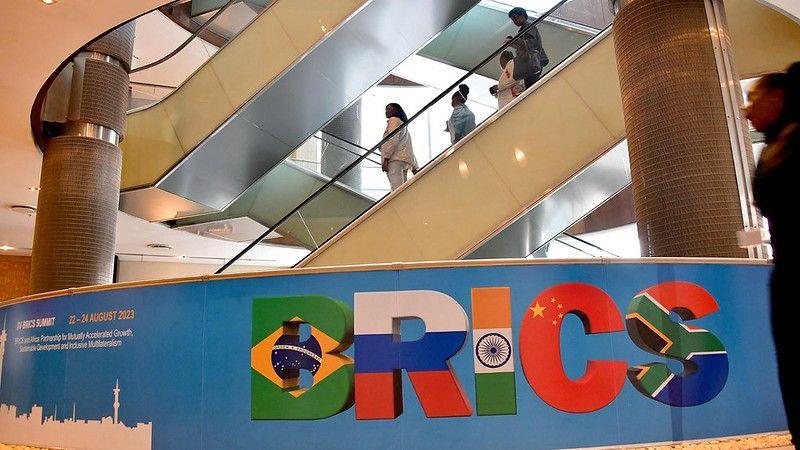
Azerbaijan's Vision For BRICS Membership Emphasises Its Growing Influence In Global Economy
The Ministry of Foreign Affairs of Azerbaijan has formally announced the country's application for BRICS membership. On July 3, at the Shanghai Cooperation Organization Summit in Astana, a Joint Declaration was issued between Azerbaijan and China, outlining Azerbaijan's intention to join BRICS. The Declaration also affirmed China's endorsement of Azerbaijan's bid for membership in the organization.
What is BRICS?
BRICS is an organization of five rapidly developing countries: Brazil, Russia, India, China, and South Africa. Initially known as BRIC, the group's name was changed to BRICS on February 18, 2011, following South Africa's accession.
Each BRICS member has its own economic strengths:
Brazil: Rich in agricultural products.
Russia: The largest exporter of mineral resources.
India: Known for its cost-effective intellectual resources.
China: Provides inexpensive labor.
South Africa: Abundant in natural resources.
The organization's name, BRICS, reflects the initials of its member countries: Brazil, Russia, India, China, and South Africa.
Currently, BRICS includes nine members: Brazil, Russia, India, China, South Africa, Egypt, Iran, Ethiopia, and the United Arab Emirates.
Why does Azerbaijan want to join BRICS?
Economist Natig Jafarli suggests that Azerbaijan's interest in BRICS is largely driven by logistical considerations.“Azerbaijan is strategically positioned at the center of new transport corridors, such as the Middle Corridor, North-South, and East-West routes, which are significant to China and India. Membership in BRICS could facilitate investment opportunities if relations are managed effectively,” he explains.
However, Jafarli also highlights potential economic risks, noting the lack of Western economic institutions and a limited small-to-medium enterprise sector in Azerbaijan.“The Azerbaijani economy is heavily consumption-based, which may pose challenges.”
Countries seeking BRICS membership have varied motivations, including reducing reliance on the US dollar, challenging the current global distribution model, and transitioning from resource-dependency to technological innovation. Given BRICS's focus on using national currencies in trade, how might Azerbaijan's potential membership affect the manat's role and stability in international trade?
Jafarli acknowledges that using the Azerbaijani manat within BRICS is challenging.
“The manat is not a convertible currency and is primarily used in bilateral relations, such as with Russia and Kazakhstan. Incorporating it into BRICS transactions could be problematic, as the primary BRICS currency is the Chinese yuan,” he added.
BRICS and its relationship with the West
Economist Natig Jafarli observes that BRICS, as a purely economic organization, primarily aims to protect mutual investments among member countries, establish preferential trade tariffs, and develop new transport corridors.
"The BRICS countries-China, India, Brazil, and South Africa- collectively have a trade turnover of $3 trillion with the European Union and the United States. This indicates that the principal trading partners for four of the five leading BRICS nations are Western entities. Therefore, BRICS exhibits mutual economic dependence on Western countries. While Russia and Iran also participate in BRICS, their economies, along with those of other member countries, are influenced by Western market models, including elements such as securities markets and competitive small and medium-sized enterprises. BRICS is a global initiative that cannot function in isolation from the West."
Jafarli further notes that the Western economies are crucial to BRICS members, including China, India, Brazil, South Africa, and even Russia. Western countries are also the primary trade partners for Azerbaijan.
“80% of Azerbaijan's exports are directed to Western countries, including Turkey and Israel, which are also considered part of the Western sphere. Additionally, 85% of foreign investments in Azerbaijan originate from these nations,” he explains.
The recent inclusion of five new BRICS members from the Middle East and North Africa, particularly Saudi Arabia and the UAE, highlights a shift towards a more balanced geopolitical stance. Despite their traditional alignment with the United States, their participation in BRICS suggests a more nuanced position rather than a complete departure from their historical alliances.
With the expansion of BRICS, the organization is expected to enhance its economic influence and role in the global economy, contributing to a new global economic order. While this expansion may be perceived by the West as a challenge to the existing international framework dominated by Europe and the United States, the more constructive approach would be to reform the global governance system to accommodate evolving economic models.
It is important to note that the expansion of BRICS does not signify the creation of an anti-Western agenda. According to Bloomberg, BRICS countries are projected to account for up to 45% of global GDP by 2040, double the share of G7 countries. This underscores the potential for alternative economic models and equitable partnerships to foster global success and prosperity.
In conclusion, Azerbaijan's application for BRICS membership marks a significant step in its quest to enhance its international economic positioning. With strategic motivations centered around logistical advantages and potential investment opportunities, Azerbaijan's bid reflects a broader trend of countries seeking to align with influential global economic groups. While the integration of the Azerbaijani manat into BRICS's financial mechanisms poses challenges due to its non-convertibility, the potential benefits of joining such a prominent alliance could be substantial.
Legal Disclaimer:
MENAFN provides the
information “as is” without warranty of any kind. We do not accept
any responsibility or liability for the accuracy, content, images,
videos, licenses, completeness, legality, or reliability of the information
contained in this article. If you have any complaints or copyright
issues related to this article, kindly contact the provider above.


















Comments
No comment